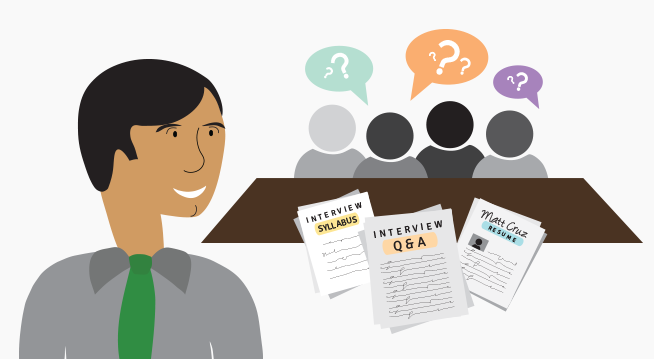Introduction:
The job application process is a multifaceted journey that begins with a meticulous collection of personal information. As aspiring candidates venture into the competitive landscape of employment opportunities, strategic preparation becomes paramount. This extensive guide aims to illuminate the essential aspects of gathering personal information before applying for a job. By understanding the key details employers seek and organizing them effectively, individuals can streamline their application processes, present themselves more compellingly, and increase their chances of securing coveted positions.
I. Personal Identification Information:
A. Full Legal Name:
- Ensuring Accuracy in Spelling
- Consistency Across Documents
- Inclusion of Middle Names or Initials
B. Contact Information:
- Current Phone Number
- Professional Email Address
- Optional: Secondary Contact Information
C. Physical Address:
- Providing a Current Residential Address
- Considering Privacy and Security
- Exploring Alternatives for Remote Positions
D. Social Media Profiles:
- LinkedIn, Twitter, or Professional Portfolios
- Ensuring Professional Presentation
- Including Relevant Links on Resumes
II. Educational Background:
A. Academic Institutions:
- Listing Names of Schools or Universities
- Including Graduation Dates
- Mentioning Degrees Earned and Majors
B. Academic Achievements:
- Honors, Awards, or Scholarships
- Relevant Coursework or Thesis Topics
- Certifications and Professional Development
C. Transcripts and GPA:
- Availability of Official Transcripts
- Including GPA if Favorable and Relevant
- Contextualizing Academic Performance
III. Professional Experience:
A. Employment History:
- Listing Previous Employers
- Inclusive Dates of Employment
- Clarifying Any Employment Gaps
B. Job Titles and Roles:
- Specificity in Describing Roles
- Highlighting Achievements and Responsibilities
- Aligning Job Titles with Industry Standards
C. Accomplishments and Contributions:
- Quantifiable Achievements
- Demonstrating Impact in Previous Roles
- Incorporating Metrics and Data
D. Skills and Competencies:
- Technical and Soft Skills
- Tailoring Skills to Job Requirements
- Highlighting Transferable Skills
IV. Professional References:
A. Identifying References:
- Former Supervisors or Colleagues
- Academic Advisors or Mentors
- Ensuring Permission and Availability
B. Contact Information:
- Providing Current Contact Details
- Including Professional Email and Phone Numbers
- Indicating Relationship to Candidate
C. Notifying References:
- Informing References Beforehand
- Sharing Job Descriptions and Goals
- Expressing Gratitude for Their Support
V. Portfolio and Work Samples:
A. Creating an Online Portfolio:
- Showcasing Projects and Achievements
- Linking Portfolio to Resume and Cover Letter
- Ensuring Accessibility and User-Friendly Design
B. Including Relevant Work Samples:
- Demonstrating Skills and Expertise
- Aligning Samples with Job Requirements
- Respecting Confidentiality and Privacy
C. Providing Project Descriptions:
- Contextualizing Work Samples
- Highlighting Contributions and Outcomes
- Explaining the Role Within the Project
VI. Certifications and Licenses:
A. Professional Certifications:
- Listing Relevant Certifications
- Including Issuing Organizations
- Specifying Certification Numbers or Dates
B. Licenses and Accreditations:
- Valid and Current Licenses
- Identifying Licensing Bodies
- Ensuring Compliance with Job Requirements
C. Renewal and Continuing Education:
- Staying Informed About Renewal Requirements
- Participating in Continuing Education
- Including Ongoing Professional Development
VII. Personal Statement and Career Objectives:
A. Crafting a Personal Statement:
- Expressing Career Goals and Values
- Personalizing Statements for Each Application
- Avoiding Generic or Overused Phrases
B. Aligning with Company Values:
- Researching Company Mission and Culture
- Demonstrating Alignment with Organizational Values
- Conveying Enthusiasm for the Company
C. Clarifying Career Objectives:
- Short-Term and Long-Term Goals
- Mapping Career Trajectory
- Showing How the Role Fits into Career Aspirations
VIII. Legal and Authorization Documentation:
A. Legal Identification:
- Valid Identification Documents
- Ensuring Compliance with Employment Laws
- Addressing Visa and Work Authorization Status
B. Background Check Information:
- Consent for Background Checks
- Providing Accurate Information
- Addressing Any Potential Concerns Proactively
C. Work Authorization for Non-Citizens:
- Work Visa Details and Expiry Dates
- Open Communication with Employers
- Clarifying Sponsorship or Visa Transfer Requirements
IX. Tailoring Information for Each Application:
A. Customizing Resumes and Cover Letters:
- Aligning Key Experiences with Job Requirements
- Tailoring Skills to Match Job Descriptions
- Personalizing Objective Statements for Each Application
B. Researching Company-Specific Requirements:
- Adapting Information to Company Culture
- Incorporating Company Keywords in Resumes
- Addressing Industry-Specific Expectations
C. Dynamic Online Profiles:
- Updating LinkedIn and Professional Websites
- Aligning Online Presence with Current Goals
- Regularly Reviewing and Refreshing Profiles
X. Digital and Online Presence:
A. Professional Email Address:
- Using a Clear and Professional Email Alias
- Avoiding Unnecessary Numbers or Symbols
- Including Full Name for Clarity
B. Online Privacy and Security:
- Adjusting Social Media Privacy Settings
- Being Mindful of Publicly Accessible Information
- Creating Professional Separation Online
C. Personal Branding:
- Consistent Branding Across Platforms
- Showcasing Professional Achievements
- Leveraging Social Media for Networking Opportunities
Conclusion:
Gathering personal information before applying for a job is a strategic process that requires careful consideration and attention to detail. By compiling a comprehensive dossier that encompasses personal identification, educational background, professional experiences, and a thoughtful array of additional details, candidates can present themselves as well-rounded and compelling applicants.
This comprehensive guide serves as a roadmap for individuals seeking to streamline their application processes and stand out in a competitive job market. The strategic gathering of personal information not only facilitates smoother applications but also lays the foundation for confident interactions during interviews and throughout one’s professional journey. As candidates navigate the dynamic landscape of job opportunities, they are empowered with a toolkit that positions them for success, ensuring that they not only meet but exceed the expectations of prospective employers.
